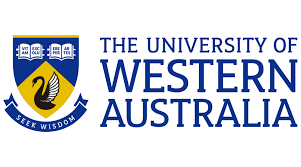University of Western Australia: High school students learn the science behind the human brain
More than 300 high school students across WA learnt about the complex world of neuroscience at an event held at The University of Western Australia last week.
The Australia Brain Bee Challenge is the country’s only neuroscience competition for high school students, and is supported by UWA, the Perron Institute and the Neurotrauma Research Program in WA.
Due to COVID restrictions, the state component of the Brain Bee Challenge, normally run at UWA, will be held online later this year, but last week’s event enabled students to take part in activities to help them learn about neuroscience and enjoy some friendly competition through quizzes.
Brain Bee State Coordinator and UWA/Perron Institute MSWA Senior Research Fellow Dr Jennifer Rodger said Brain Bee, which had been running since 2007, aimed to increase students’ understanding of career prospects in science, while learning why research into the human brain was important.
“Neuroscience brings together biology, chemistry and physics to understand how the brain works at a cellular level, but also what can inhibit it from functioning properly,” Dr Rodger said.
“As far as we have come in medical science, we still only have a very basic understanding of how the brain works.
“There are billions of neurons in the brain and each one of those makes tens of thousands of connections so it’s beyond the capacity of even the most advanced super computers.
“When you think about our ageing population and how devastating disorders affecting the mind can be, it highlights how important neuroscience is, and why we need to cultivate the curiosity and passion of our young people and researchers who can really make a difference in the future. This event to engage young students provided us with the opportunity to do just that.”
School students participated in activities including lab work to understand brain neurological impulses that create our consciousness and ability to think; learning about neurological diseases and how we diagnose them; and looking at the latest research in the field and future challenges for scientists.
Dr Rodger said one of the highlights of the event was seeing the students inspired and engaged in the exercises, learning about a fascinating field of which scientists had just touched the surface.
“I hope that some of these students will go on to work in the field, and help make future advancements in neuroscience where there is still so much to learn and so many breakthroughs to be made,” she said.

